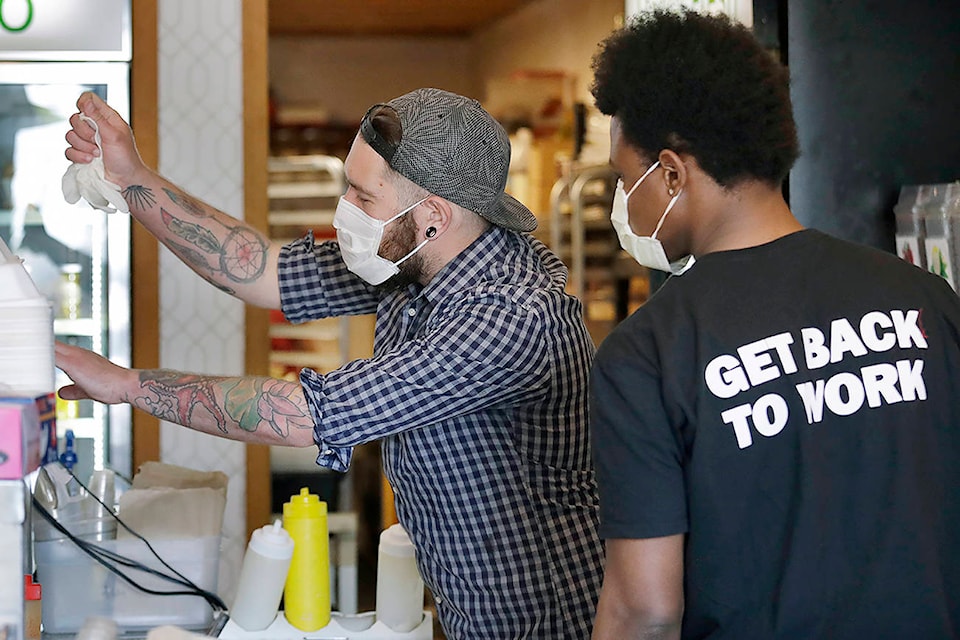The following Labour Day-focused opinion piece is co-written by Laird Cronk and Sussanne Skidmore of the B.C. Federation of Labour. Laird is president of BCFED, while Skidmore is secretary-treasurer.
Let’s say you wake up sick tomorrow.
In much of the world, the idea that you might still go into work would seem absurd. Workers in countries like Sweden, Germany and even Washington State can count on guaranteed paid sick leave – it’s the law.
But not in B.C. More than half of the province’s workers (53 per cent) don’t have paid sick leave. For them, the choice is either go into work sick or don’t get paid.
That may be about to change, though. In what could be one of the biggest advances for working people in a long time, the B.C. government has promised to bring in paid sick leave by the beginning of next year. And they’re consulting British Columbians right now about what it will include, who it will cover and how it will work.
If they get it right, B.C. will lead the country with a new standard that helps keep individual workers and their colleagues healthy, protects our community and reduces costs for businesses.
But some lobby groups are pushing hard for a watered-down approach. And if they prevail, the evidence suggests that workers aren’t the only ones who will be worse off.
When we force sick workers to choose between staying home and paying the bills, it’s often an impossible choice. And it leads to the spread of infectious disease to coworkers, customers and the public.
That leads to lower productivity, higher absenteeism and greater disease transmission. When we’re talking about colds and flu, that’s bad enough. But we’ve learned the bitter lesson that when a deadly illness like COVID-19 is circulating, the outcomes can be disastrous and tragic: workplace closures and economic shutdowns for business, and debilitating illness and death for the general public.
Paid sick leave is one of the ways we protect our community and our economy from diseases. When sick workers can choose to stay home without paying a financial penalty, they recover more quickly. Their coworkers (and coworkers’ families) stay healthy. And businesses are more productive and have lower costs from employee turnover and workplace injuries.
A robust paid sick leave approach also does a lot to fight inequality. Nearly nine in 10 low-wage workers don’t have paid sick leave, and that group includes a lot of women and Indigenous and racialized workers. Ensuring they can stay home when they’re sick at full pay improves their health and lets them count on a more stable income.
Which is why so many countries require employers to offer it (and pay for it). New Zealand requires 10 days of leave a year; in Washington State, it’s 52 hours. Swedish workers get 14 days of sick leave, and German employers cover up to six weeks.
It’s also why there’s so much public support for paid sick leave. National opinion surveys repeatedly show overwhelming majorities in favour of ensuring that employers provide paid sick leave for all of their employees.
With public support so widespread, Premier Horgan’s government has every reason to bring in a paid sick leave plan that does all it can to protect the health of workers, business and the community. A truly effective plan will be:
• Fully paid: Workers will get their full wage if they stay home sick, and won’t face a financial penalty
• Universal: An effective plan will cover all workers, including part time and gig workers.
• Seamless: Workers’ sick pay will be paid immediately through their employers, and workers won’t have to apply for coverage and wait for reimbursement while the bills pile up.
• Protected: The plan will ensure nobody can lose their job because they stayed home when sick.
• Ample: The plan will provide enough sick days that workers aren’t scared of using up days before the year is out. 10 days is a reasonable level of coverage.
The province’s online consultation is on now, with a web survey at engage.gov.bc.ca/paidsickleave. We encourage you to share your views — but don’t stop there. Speak out as part of our campaign at futureforall.ca/sick_leave.
This Labour Day, let’s remember what we’ve learned from this pandemic about how much this province relies on workers, and how important workplace health is for all of us. And then let’s take those lessons to heart by bringing in a paid sick leave plan that British Columbia can be proud of.
